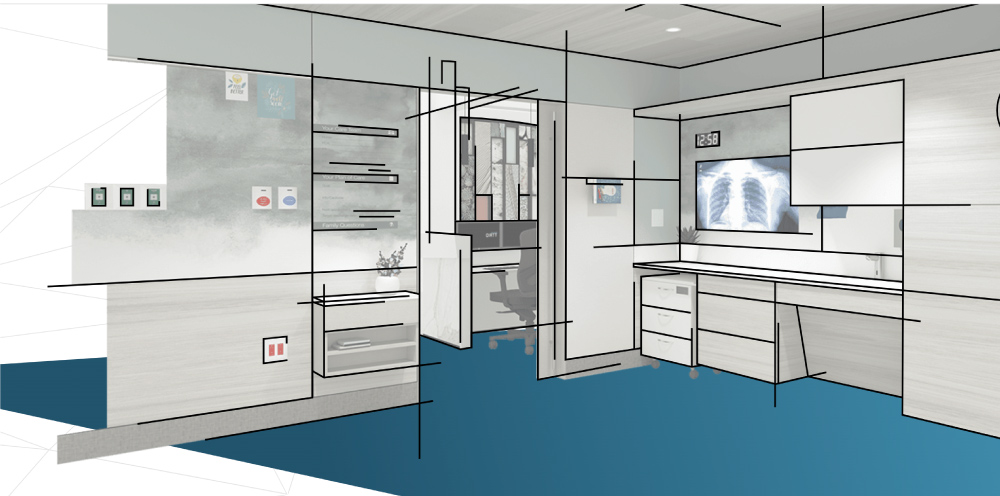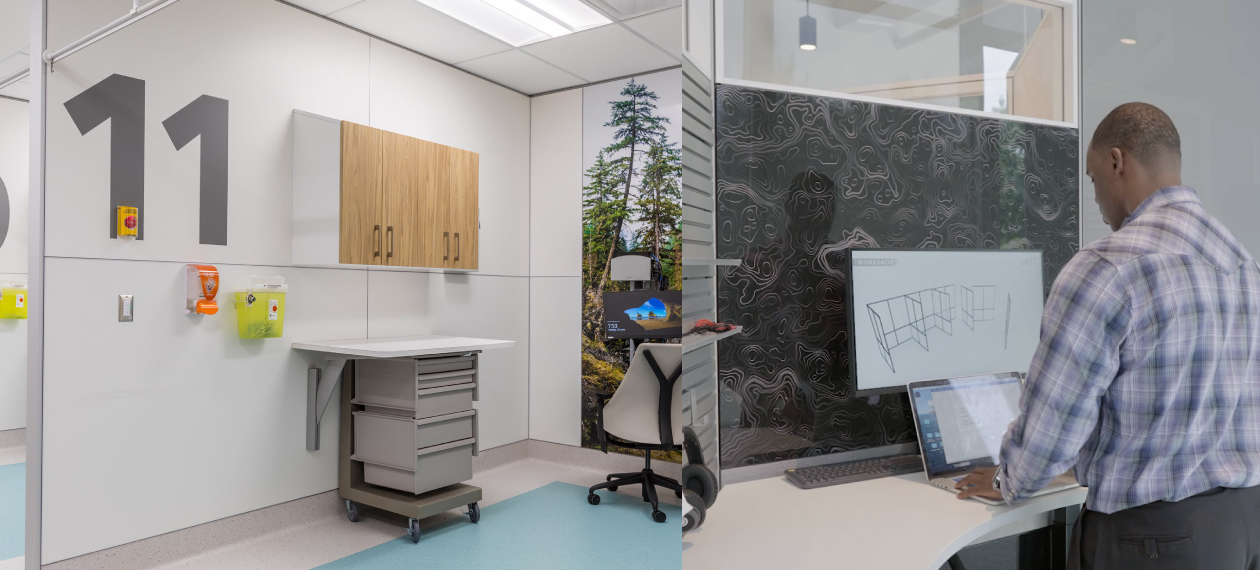Theo Scripps is a big believer in prefab construction methods. A student of history, Scripps brings up the past when he gets excited about the future, referencing industry disruptors and innovators like Toyota and Amazon when he talks about his own company, DIRTT.
“Toyota is just one, but there are all kinds of examples in manufacturing where they’ve shortened the supply chain and radically changed the way their industry did something,” says Scripps, healthcare market specialist for DIRTT. “That's what DIRTT is to me. It's a radical departure from the way that we used to do interior construction.”
An innovator in their own right, DIRTT is set on disrupting the way the healthcare industry builds, introducing new prefab construction techniques and software that major players like Kaiser Permanente, MD Anderson, and Mayo Clinic have already fully utilized. It’s a new dawn for prefab design and manufacturing techniques, Scripps says.
We spoke with Scripps to learn how prefab is going to change healthcare construction.
Prefab methods of construction are gaining more attention these days. What are the advantages?
Speed and flexibility are really the biggest things. If you think about how wasteful construction is — well, let’s come at it from a manufacturing mindset.
Let's say Toyota built cars the way we build buildings. You would call and say, “Hey, I've heard about this Camry. I want a green Camry.” And they say, “Okay, we can give you a green Camry for $20,000.” You say, “Awesome,” and hang up the phone. And a couple of days later, they show up on your driveway with a whole bunch of metal and rubber and wires and glass and whatever the hell it is you make a car out of.
They have dozens of people and they're making all kinds of noise, making massive piles of scrap and they're yelling at each other because somebody put the steering wheel on before the engine went in, or whatever. And then, you know, they promised you it was going to be ready on June 1. And here it is, late May, and you're like, “You sure that you’re gonna be ready by June 1?” And it turns out, it's actually going to be June 15. And oh, by the way, it's not $20,000 anymore, it's going to be $25,000. And we really tried to make it green, but it's yellow. Is that okay?
But that’s construction, right? You would never put up with that when buying a car. And it's not because they're stupid or evil or anything like that. It's just the way we build is really, really bad. And if you made Toyota build your car in your driveway, it'd be just as bad. I just think that construction is going to change. It needs to. And now there are even more reasons: it’s a highly competitive environment, and there's a lack of labor and high material costs, all that stuff.
How about construction in the healthcare sector, specifically?
Back in architecture school, I had a professor tell us to avoid healthcare like the plague, because it is such a tough place to build and it requires such specialized knowledge. But what drew me to it, frankly, is that's where the action is.
It's critically important that a facility is built on time. Facilities are investments. When we build a building, it's a machine. When you turn it on, it makes money and, ideally, it will produce more money than it costs to make and be a positive ROI for that client.
But whether it's a hospital or a factory, that's the equation at the end of the day: Can we build this thing fast enough, and at a reasonable cost, so that it generates a profit? Typically, if you're dealing with a general contractor that specializes in healthcare, that's a darn good GC. And the person who's managing that schedule has been doing it for years, and so has the person who's procuring the subcontractors.

So what solutions does DIRTT present?
It's a radical departure from the way that we used to do interior construction. Prefab is building something somewhere else to bring it to the jobsite, and there are good reasons to do that. We're single-sourcing interior construction — and automating it. We have software that we created, through the genius of a guy named Geoff Gosling, where we build a model and all of the pieces have intelligence, so you can get information from them. Compared to a lot of other imaging software, I can show you exactly what an interior is going to look like.
But the thing is built in cyberspace, and every little piece and part has a cost associated with it. I can tell you all those costs, and I can also take that same file and send it to the guys on the floor shop, and the machines that make this stuff are going to work off the same file. So when a customer looks at something and says, “Yeah, I want that,” it's already been done. The instructions sent to the machines are already created within that. So it's super fast. And that's really what differentiates us from a lot of other prefab and modular operations.
Why is now the right time for prefab?
I think that the way we deliver a construction project needs to change, and COVID definitely impacted that: the supply chain disruption, the need for more healthcare spaces, the shortage of labor, the escalation of material prices. All of these tailwinds are working together. Having a conversation with somebody about prefab used to be like pushing a rope because there was no incentive to do it. Now there are tons of incentives.
I would urge facilities leaders that once they get out of this COVID surge, and are able to take a breath, just go and learn about prefab. Don't feel compelled to wait until there's a project going on. Learn about what it can do. And just know that there's a different approach. That's probably the biggest thing.
Work smarter, not harder, right?
That's the kind of thinking that changes an industry and that's what we need in construction. And we've got it, it's happening — the snowball is rolling. I think healthcare facilities are going to be on the front-end of the wave.
Posted by
Collaborate with your Peers!
HealthSpaces is a community for people that plan, design, build and operate spaces where healthcare is delivered.
June 7-9, 2026 | Braselton, GA
Learn More




-4.png)
-Dec-09-2025-05-48-44-4379-PM.png)
-4.png)
-1.png)
-2.png)

Comments